Research Results
Technologies leading to the next generation of IoT
Establishing a "Universal Information Network" to create comfortable technologies for peopleFY2023
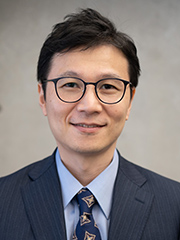
- KAWAHARA Yoshihiro (Professor of Graduate School of Engineering, The University of Tokyo)
- ERATO
- Research Director (2015-2021), "KAWAHARA Universal Information Network"
Ambition of the "KAWAHARA Universal Information Network" project
The term IoT (Internet of Things) has recently gained popularity, bringing various changes to our lives with IoT technology. All kinds of buildings, automobiles, home appliances and electronic devices are connected to the network, increasing convenience in our lives.
On the other hand, many people may feel frustrated with the time wasted waiting for their smartphones to be charged, worrying about the remaining battery power every day.
The "KAWAHARA Universal Information Network" project team aims to create "just the right tool" for everyone to use easily.
The "Universal Information Network" refers to a technology that seamlessly incorporates information networks into everyday life, like universal gravitation. Not only people and things, but also things and things communicate information there, supporting human comfort and safety without being obtrusive. This project focuses on the era following the era of IoT.
Specifically, it focuses on the following three items: "energy (wireless power transfer)" for sustainable*1 operation of IoT devices, "actuation (driving devices)" for unconventional robots moving softly and flexibly, etc., and "fabrication (manufacturing)" enabling low-cost and rapid production of smart IoT devices such as sensors and wearable*2 devices. The project promotes research and development in each of these fields, and proposes social implementations across the three fields.
The most remarkable achievements, particularly, are the study of wireless power transfer in the "energy" field and the accomplishment of the "energy", "actuation" and "fabrication" themes combined, namely personal mobility*3, "Portable and Inflatable Mobility (poimo)" (Fig. 1).
*1 Sustainable
Sustainable means "being able to maintain over a period of time". It is used for technologies, policies and economic systems that take environmental impact into account.
*2 Wearable
Wearable means "being able to be worn". It is a generic term used in recent years to refer to information devices that are worn and used.
*3 Personal mobility
A one- to two-seater vehicle that is more compact and turns in a smaller radius than a passenger car, has excellent environmental performance, and serves as a convenient means of transportation in the local community.
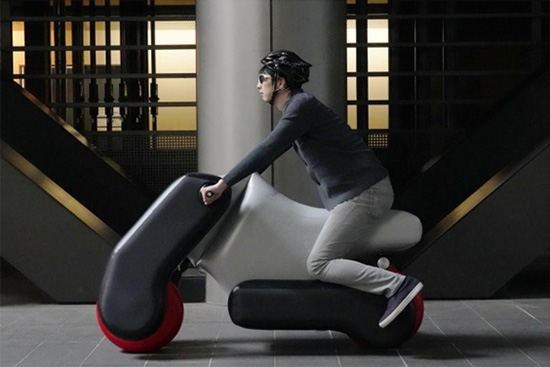
Fig. 1
Electric motorcycle-type poimo. This personal mobility vehicle has a soft balloon structure, and was developed under a joint research project with the "KAWAHARA Universal Information Network" and "mercari R4D", the research and development organization of Mercari, Inc.
The key to promoting IoT is wireless power transfer technology
As wireless communication technology evolved, concepts such as IoT have emerged for information networks in living spaces. Advances in IoT have increased the number of electronic devices with various built-in functions, such as interfaces, sensors and actuators, around us. Energy is currently supplied to these devices mostly by batteries and electrical cables. Accordingly, the cost of replacing batteries and the complexity of wiring increases with the number of devices. This has become a difficult problem.
As an individual device, a wireless charger is available to charge a device simply by placing it on top. However, powering all small devices placed in various locations in a large space safely, autonomously, efficiently and wirelessly has not been an easy task before.
A new wireless power transfer technology*4 that can supply energy to numerous devices is believed to be the key technology to realize the ultimate IoT, in which all things necessary for daily life are connected via a network to support human activities.
*4 Wireless power transfer technology
Wireless power transfer is a technology that transmits power without connecting power cables or contacting metal electrodes. There are several types, including electromagnetic induction and magnetic field resonance.
Expanding the network of comfort with wireless power transfer technology
Aiming to create a network connecting multiple information and communication devices, both in terms of power and information, the project has studied wireless power transfer technology covering a flat surface. Efforts have been made to study methods of designing antennas that can receive power anywhere on a flat surface, and a wireless power transfer sheet (Fig. 2) that can be easily spread anywhere.
As a new form of wireless power transfer, a room where wireless power can be supplied to devices anywhere in the room has now been realized (Fig. 3). A transmitter structure called a multimode quasi-static cavity resonance (multimode QSCR)*5 was devised and implemented. Metal sheets are embedded in the walls, floor and ceiling, making the entire room a charger. Upon entering the room, power can be supplied to multiple devices such as smartphones, fans and lights at the same time without using cables. This transmits power using magnetic fields. The key to realizing this was to create a magnetic field that spreads over the entire three-dimensional space by regulating the two-dimensional distribution of the current flowing on the wall surface, and to devise a mechanism to control this field at will (Fig. 4).
The impact of the power transfer system on the human body was also assessed to confirm that the system is within the international standards of safety guidelines.
When transmitting power to multiple small electronic devices, there is a trade-off between device size and transmission distance, which has been a problem for the development of IoT. The power transfer technology covering a space presented here will be a major step forward in solving this problem, as it can transmit more power than before to small devices scattered throughout a large space within human safety standards.
Other examples of wireless power transfer include a textile-based power transfer system that uses fabric products such as clothes and sofas as chargers to wirelessly transmit power to nearby devices. It provides safe, energy-efficient, body-scale wireless power transmission while maintaining the comfortable feeling of clothing (Fig. 5).
"poimo", a personal mobility vehicle for short-range use, was developed by combining such wireless power transfer technology with "actuation" and "fabrication" (Fig. 6). Users can customize their own vehicle fit to their body size and posture by simply posing for a ride. It is used after being inflated with a commercially available air pump. It is a light and soft vehicle that folds up like a beach ball to be carried around when not in use.
This model is wireless powered and can run for approximately one hour per charge. The speed is around 10 kilometers per hour. It can run even on some hills.
*5 Multimode quasi-static cavity resonance (multimode QSCR)
A quasi-static cavity resonance (QSCR) was presented in 2017, inspired by cavity resonators. The focus of the present study is on the fact that the current on metal plates flows in multiple directions. A multimode QSCR capable of generating multiple magnetic field distributions was devised to overcome the challenges of the QSCR.
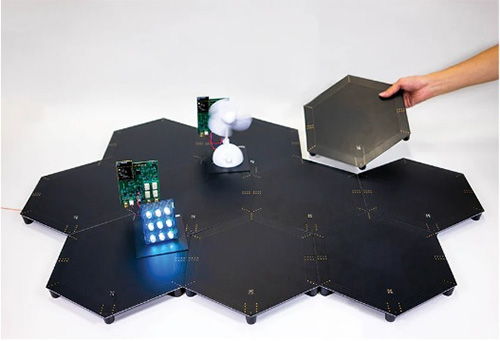
Fig. 2
Two-dimensional wireless power transfer system that can be applied to a power transfer area controlled at will. It can supply power to devices placed at any position on a flat surface, such as a desk, a floor or a wall, simply by spreading it.
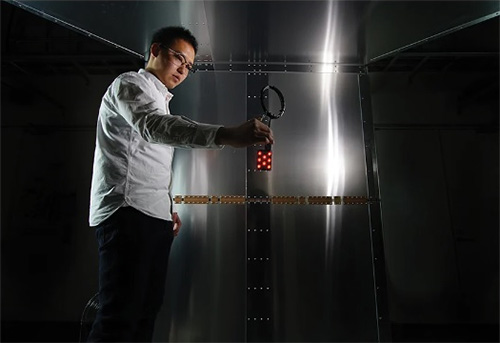
Fig. 3
Room-scale wireless power transmission using a multimode QSCR. The new approach provides a power transmission efficiency of 37% or higher throughout the room.
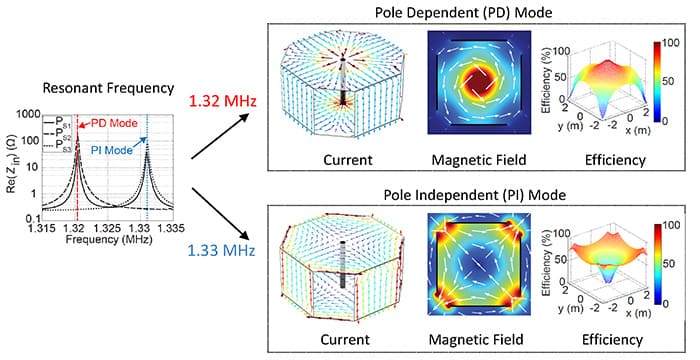
Fig. 4
Currents and magnetic fields generated by a multimode QSCR. The power transmitter (multimode QSCR) comprises metal plates and a capacitor, operating as a power transmission resonator with low loss to generate an AC magnetic field in the room. The transmission of the AC magnetic field oscillating at the resonance frequency of this power transmission resonator causes resonance. It results in AC currents distributed throughout the walls and floor, creating a three-dimensionally distributed AC magnetic field to fill the entire room.
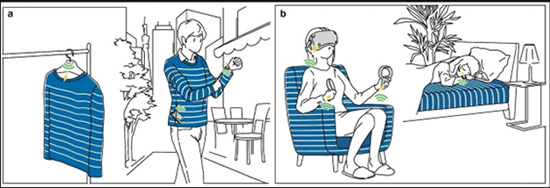
Fig. 5
Textile-based power transfer systems can be incorporated into fabric products such as clothes, sofas and beds to charge various devices.
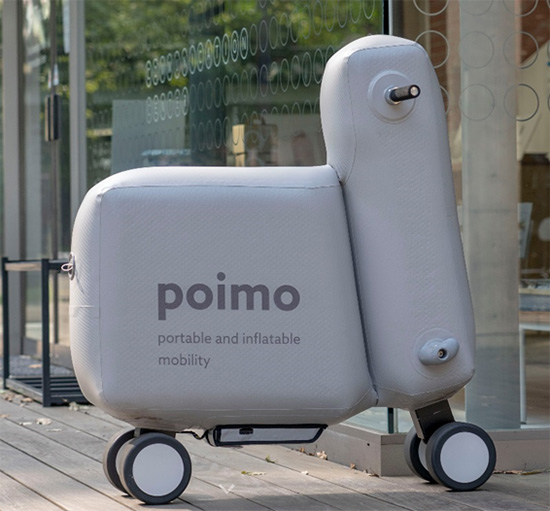
Fig. 6
poimo: Portable and Inflatable Mobility. The wireless and battery-free structure suitable for this application was developed in collaboration with the wireless power transfer group.
The potential of IoT expands to the next level with the "Universal Information Network"
The "Universal Information Network" has the potential to change the meaning and value of every aspect of our ordinary daily lives, as well as the way of working and the structure of industries. Not only each technology and function, but also the contact point with users and its application for the society of the future, must be addressed.
The post-project evaluation suggested that the project will generate a new scientific and technological trend with IoT innovations, give due attention to its development as a business, and create a movement on a higher level.
The creation of a "Universal Information Network", as well as the realization of fundamental technologies that enrich our lives and create new industries, will remain the goal of the project.
